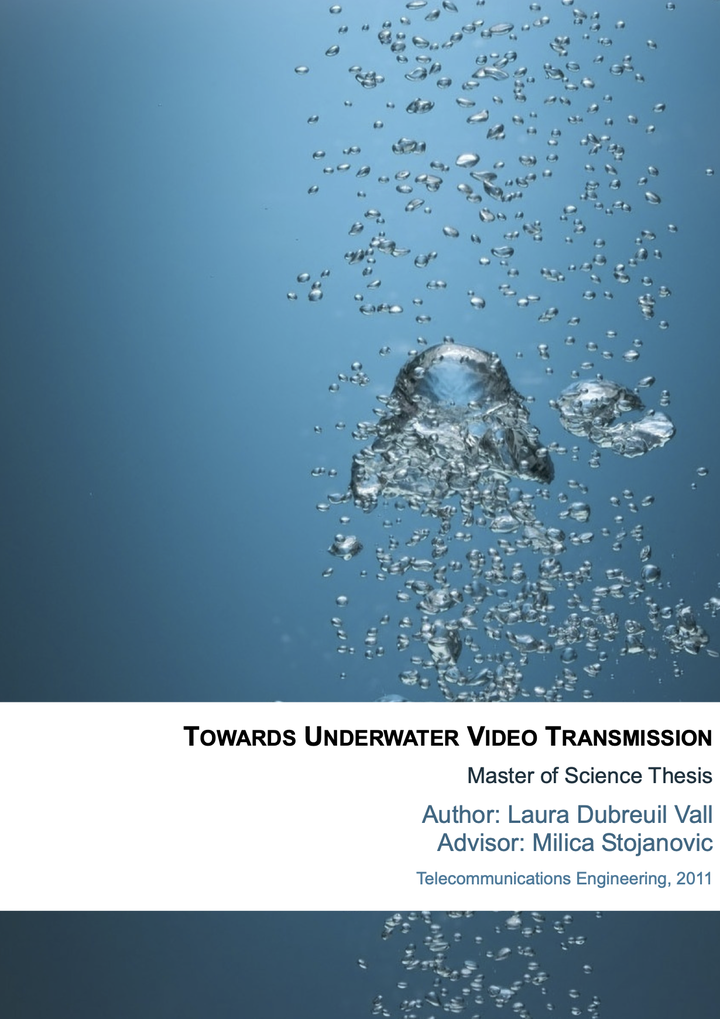
Abstract
This project addresses the implementation of an acoustic OFDM (Orthogonal Frequency-Division Multiplexing) system for underwater video transmissions aimed to work over short distance links, with short delays and relatively high available bandwidth. This work includes research on four main approaches: 1. Research on video compression techniques. 2. Research on modulation and detection techniques. 3. Design of signal processing techniques aimed to compensate for the Doppler effect caused by motion. 4. Research on techniques to reduce the channel coding applied to the video data. Regarding (1), it is important to find a suitable video compression technique that substantially reduces the amount of video data to be transmitted in order to properly utilize the limited bit rate capacity of the underwater channel. The chosen compression technique has been the VLBV (Very Low Bitrate Video) coder offered by the MPEG-4 standard due to its efficient low bit rate compression capabilities, aimed to work with conventional rectangular image sequences with high coding efficiency, high error robustness, low latency and low complexity for real-time applications. Concerning (2), the OFDM modulation technique has been considered for its excellent capabilities applicable to high speed communication systems in wireless acoustic underwater channels, characterized by frequency selectivity. However, the motion-induced Doppler distortion makes it important to design an efficient algorithm (3) that deals with the synchronization problems and frequency shifts caused by the accentuated Doppler effect in underwater channels. With regard to (4), a set of error resilience tools offered by the MPEG-4 standard has been implemented at the video encoder. These tools enable robust video communication over noisy wireless channels by offering additional protection over error bursts and maintaining the visual quality of the decoded video. This allows the conventional channel coding applied to the video data to be reduced, thus increasing the available data rate of the system.